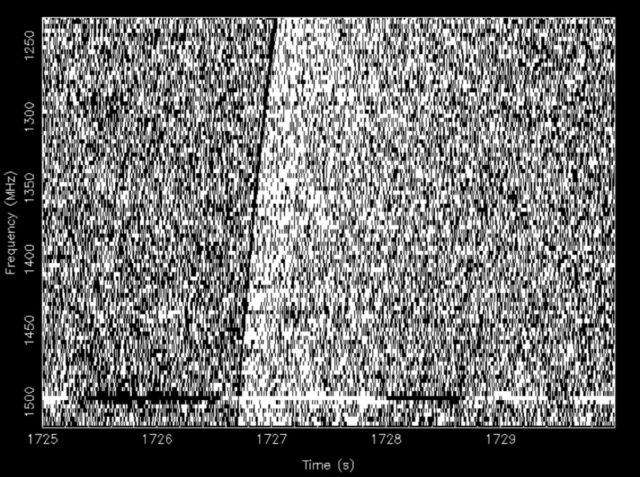Mysterious fast radio bursts may be caused by ‘star shocks’
- October 12, 2023
- 0
At least some of the fast radio bursts may be due to “star shocks” occurring.on the surface of neutron stars“, claim scientists from the University of Tokyo in
At least some of the fast radio bursts may be due to “star shocks” occurring.on the surface of neutron stars“, claim scientists from the University of Tokyo in
At least some of the fast radio bursts may be due to “star shocks” occurring.on the surface of neutron stars“, claim scientists from the University of Tokyo in a new paper.
Fast Radio Bursts (FRB) are a sudden pulse of radio frequency radiation that lasts only a few microseconds. Since the first detection in 2007, astronomers have recorded thousands of such events: Some sources emit them regularly, others produce them once and remain silent.
Common sources of regular radio bursts are pulsars and magnetars; Neutron stars, the dense cores of once massive stars, are now tens of kilometers in diameter with a mass comparable to that of the Sun. Pulsars rotate at a frequency of several hundred revolutions per second, at which the magnetic field is tilted towards the rotation axis due to the occurrence of radiation. Magnetars rotate more slowly but have the strongest magnetic fields in the universe; It is trillions of times more powerful than Earth’s.
In 2020, the CHIME (Canadian Hydrogen Density Mapping Experiment) telescope recorded an FRB-like event, but the burst came from SGR 1935+2154, a “normal soft gamma-ray source.” The event was confirmed by the STARE2 (Transient Astronomical Search for Radio Emission 2) telescope, and the suggestion that the FRB might have made the magnetar looked promising.
Scientists also noted several FRBs that no longer repeat, suggesting that their sources have been destroyed. One such source could be a lightning bolt, a strange astronomical event associated with the collapse of an extremely massive neutron star into a black hole. This event occurs when two neutron stars merge to form an extremely massive neutron star, and the immediate collapse of this star is prevented only by its rapid rotation. However, due to strong magnetic fields, the rotation slows down, the object collapses into a black hole, and the energy of the magnetic fields is released in the form of FRBs.

In 2022, astronomers using the CHIME telescope detected an FRB recorded as a single event, but actually consisting of nine separate bursts repeated approximately every 215 ms, with its source located roughly near the surface of the magnetar. According to one version, the star was rotating slowly and the event was caused by vibrations of its crust, that is, a “starquake”. Scientists at the University of Tokyo decided to compare FRB statistics with data on earthquakes and solar flares to identify possible similarities. To do this, 7,000 signals from three sources of repeated FRBs were examined to account for correlations between other similar events; the same approach used to establish correlations in the times and energies of earthquakes and solar flares for further analysis of the three phenomena.
It turns out that there are indeed some similarities between FRBs and earthquakes. Especially after a single event, the probability of experiencing an aftershock varies between 10% and 50%. Even though FRB and earthquake activity vary significantly, the frequency of aftershocks remains constant; There is no correlation between mainshock and aftershock energies. The researchers plan to continue analyzing new FRB data, but their current results suggest that neutron stars may have hard shells prone to “starquakes” that release enormous amounts of energy in the form of FRBs.
Astronomers say their project will help learn more about both earthquakes, although conditions on distant superdense stars are radically different from those on Earth; and about very high densities of matter and the fundamental laws of nuclear physics.
Source: Port Altele
As an experienced journalist and author, Mary has been reporting on the latest news and trends for over 5 years. With a passion for uncovering the stories behind the headlines, Mary has earned a reputation as a trusted voice in the world of journalism. Her writing style is insightful, engaging and thought-provoking, as she takes a deep dive into the most pressing issues of our time.